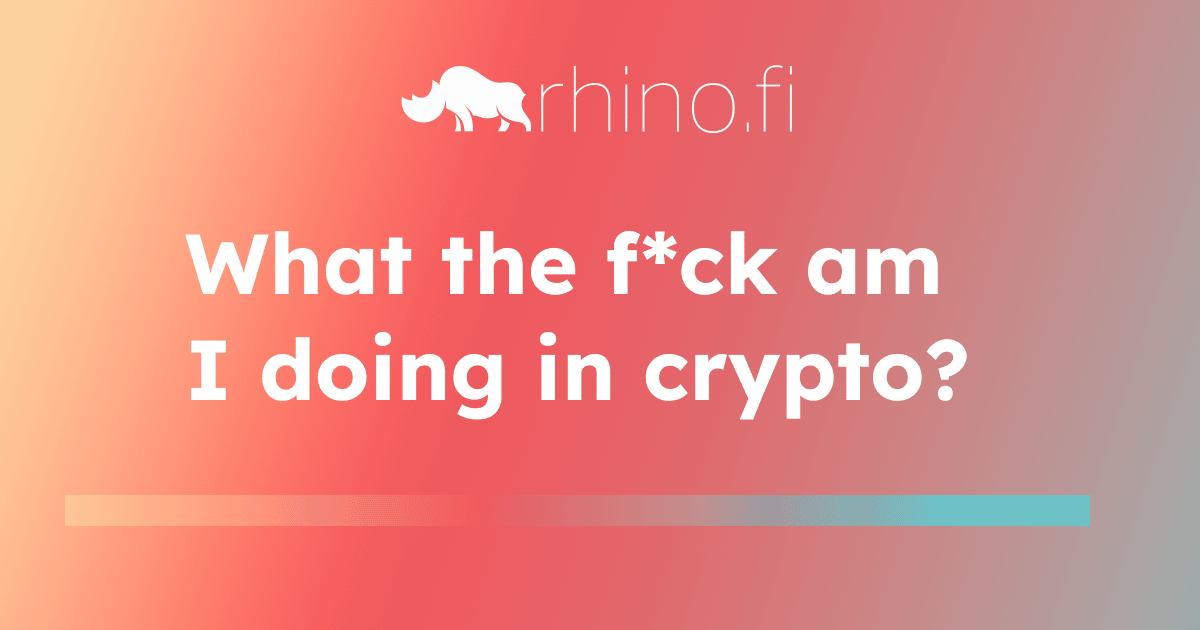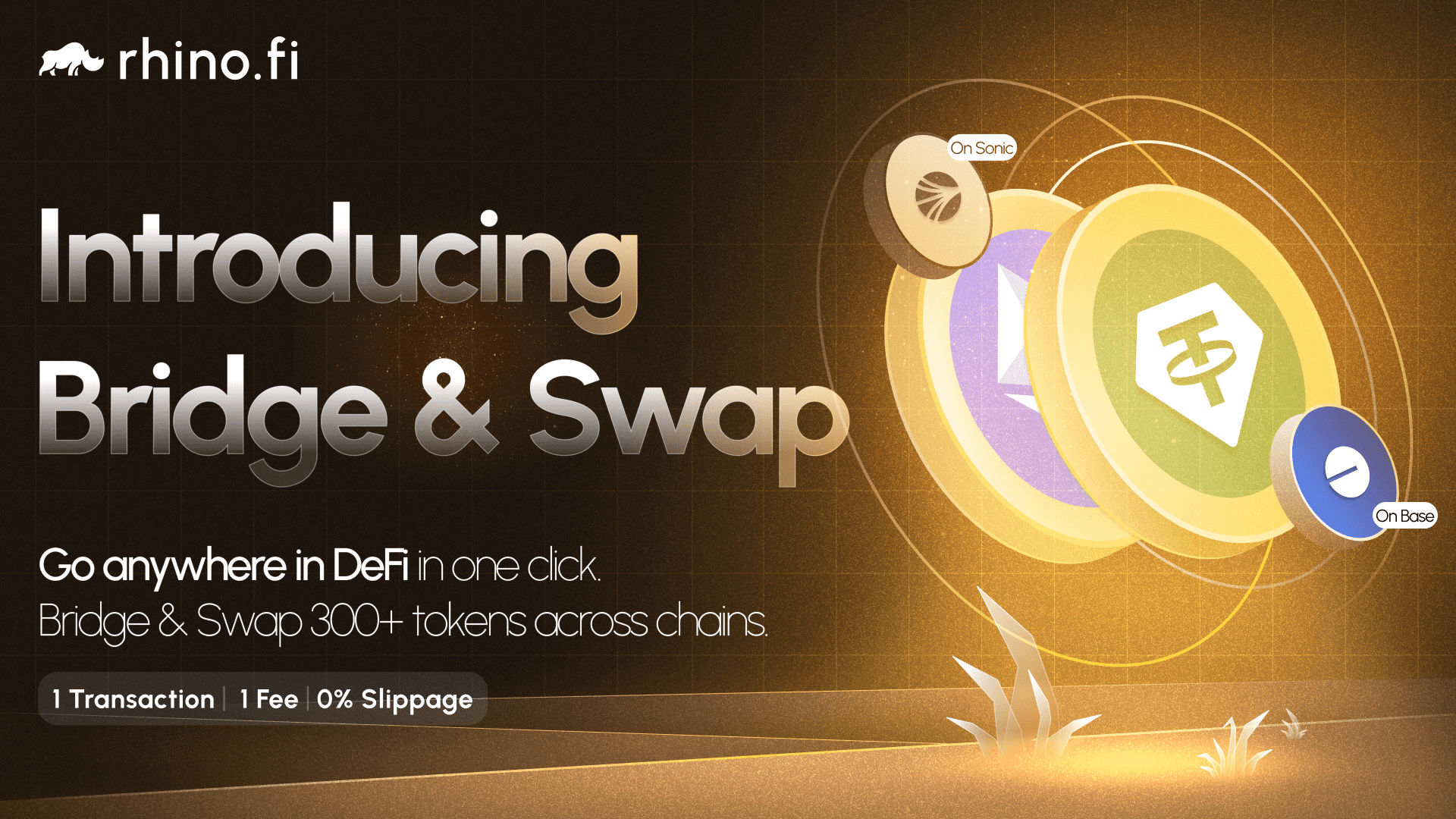In the six years since I started building in crypto, we’ve seen numerous hacks, scams, rug-pulls and pump-and-dumps. But none of them has shaken my belief in the digital finance revolution like this.
First we saw the collapse of FTX, the second-biggest centralised exchange (CEX) in crypto. And then we saw the ripple effect: Gemini pausing withdrawals, BTC and ETH plummeting in value.
Naturally, the critics has piled in. The word ‘contagion’ hasn’t been used this often since news broke of a mysterious virus in Wuhan, and the media has become locked in its own personal arms race to see how can shout ‘Wild West’ the loudest.
Like the rest of my team, I was disgusted by the collapse of FTX. By the way Sam Bankman-Friend, a rogue individual, exploited the trust of his users to prop up his ailing financial empire, and then tried to wipe the slate clean with crocodile tears.
It was like a bad movie script, written by someone who hated crypto.
When something like this happens, it’s impossible not to question yourself. If bad actors are going to exploit the potential of crypto, and the hope for a fairer financial future, to swindle people out of billions of dollars, then what’s the point?
That’s what I thought at first, anyway. But then I started to think again.
And actually, this whole mess only vindicates what we’re doing at rhino.fi.
Our vision is to build the best platform for DeFi opportunities in the world. That’s why we’re creating a DeFi aggregator that helps our users to explore the best of DeFi across every chain, and enjoy the freedom to seize any opportunity when it’s hottest.
In fact, one of our north star goals is to help our users collectively make $1 billion in profits. This aligns us with our users’ success, focusing our minds on the potential and opportunities in DeFi, and on protecting our users from the risks as best we can.
We’ve made this commitment because we believe DeFi is best for our users’ long-term financial prospects.
Because DeFi means the replacement of centralised systems with open, transparent ones.
It means self-custody (or flexible custody) instead of entrusting your money to opaque entities with unknown liabilities.
And it means rules that can’t be bent, no matter how smart or devious the person doing the bending.
The FTX debacle has only served to demonstrate why these attributes are so important.
FTX comprised 130 shell companies based around the world. They had hundreds if not thousands of loans and counter-parties. All of this meant that it was very opaque to anyone on the outside.
Users were assured by FTX’s terms of service that when they deposited funds, those funds would be kept secure and not used for any other purpose.
In practice, however, these terms and conditions were not respected, and the funds were misappropriated for other means.
In DeFi, however, we have a solution that prevents this from happening. Smart contracts.
Unlike their paper ancestors, smart contracts can’t simply be ignored or over-ridden. In fact, they allow us to create unbreakable rules and terms of service.
At rhino.fi, smart contracts are the bedrock of our entire system of self-custody: we require your signature to execute any transaction on your behalf, and this requirement is written into our code. So we couldn’t do anything with your funds without your consent – even if we wanted to.
Smart contracts also provide a guarantee that creditors will always be repaid quickly in the event of bankruptcy. With FTX, almost all counter-parties will have to wait until bankruptcy proceedings are complete to get their money back; in contrast, the institutions that lent to Three Arrows Capital like Maker, Aave and Compound have already been paid back, just five months after liquidation.
Why? Because the terms of the smart contracts didn’t allow 3AC to default, so they made a major effort to pay these creditors back first.
So not only does DeFi protect you against malpractice. It also protects you from the whims of the market. It’s more than trustworthy, it’s trustless.
But it’s one thing being committed to DeFi ourselves. It’s quite another to convince other people, and make them want to switch from centralised to decentralised exchanges (DEXs) like rhino.fi.
The FTX collapse may have dented people’s faith in CEXs, but they still have a huge headstart.
They’ve accumulated a large user base, and that means they have more money to spend on advertising. FTX was sponsoring everything from Miami Heat basketball team to cricket’s T20 World Cup; Coinbase got millions of views through its QR code advert during the Super Bowl in January.
We can’t outmuscle these larger competitors, but we can outthink them.
Because DeFi isn’t just trustless. It’s permissionless too, and just as importantly, it’s open access.
This is already leading to an unparalleled spate of crowdsourced innovation. By tapping into this, we can deliver improvements to your trading experience before our larger, more centralised competitors can react.
On rhino.fi, by aggregating the best of DeFi from every chain, and every protocol, we can offer a wider range of tokens, NFTs and yield opportunities than even the largest centralised exchange can match. And we don’t need to build each ‘big thing’ ourselves: we can access new ideas and innovation in the ecosystem, and make it quickly available to our users.
We are still in the process of getting there. The focus at the moment is on giving ourselves the tools to integrate external opportunities quickly.
- By aggregating other DEXs, our outposts on new chains and integrations allow us to add any liquid token on those chains for our users at a click of a button.
- Some of the MVP designs being worked on for cross-chain yield could let us integrate new yield opportunities instantly, without needing to do backend software development. Soon we should get to a point where we could add an EVM chain with just config changes.
- We are displaying the NFTs owned by our users using third-party libraries, and in future we should allow buying and selling using third-party aggregators.
- If any new innovation appears in the industry, on any chain, which can benefit our users, we should be well positioned to tap into it.
The great thing about this DeFi ecosystem approach is that the more chains and protocols we integrate, the easier it becomes to integrate others.
For example, once we’ve added Evmos (an EVM Cosmos chain), we are suddenly connected to Cosmos and could integrate with IBC (for bridging), and add staked Cosmos assets to our yield/ invest section.
This isn’t to say the fallout from FTX has been easy for us, to be sure.
It’s been horrible, just as it has been for everyone in crypto. However, by illustrating the perils of CEXs, it proved the necessity of our self-custodial DeFi platform.
The crisis may have shaken my faith in crypto. But it’s strengthened my faith in DeFi.





